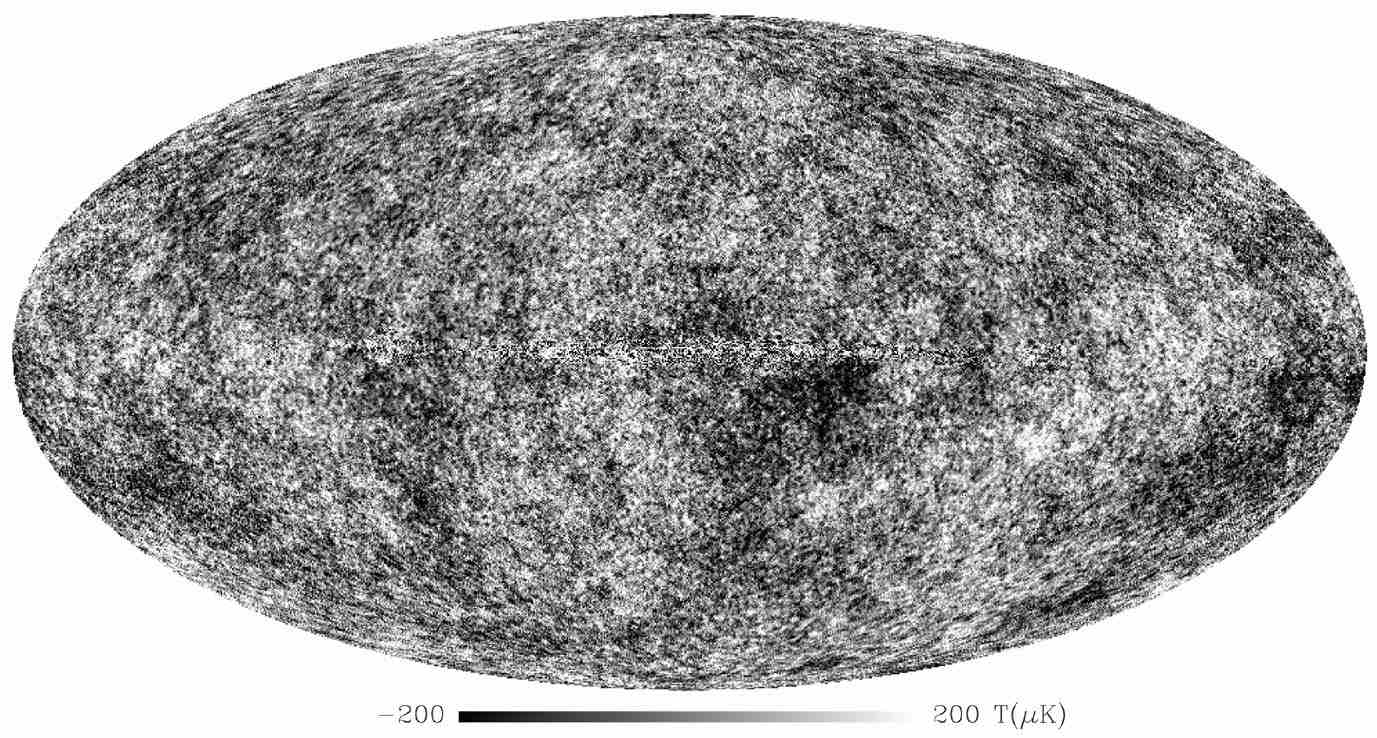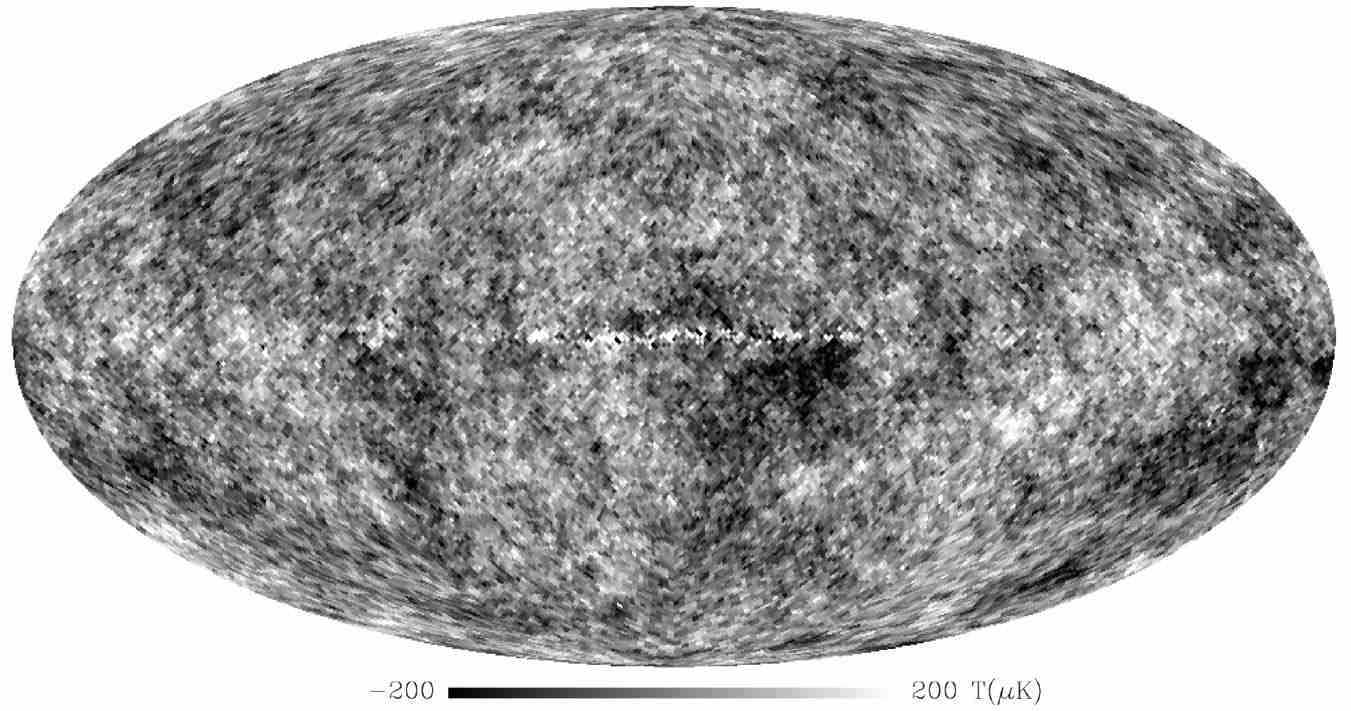


In this section we look at the extraordinary dual nature of the CMB — a wall for primordial sound showing the largest structures in the Universe; and a slice through the pre-inflation quantum world, showing the smallest structures ever seen.
At the beginning of our story, the microwave background played a starring role - providing an image of the infant Universe just as structure began to emerge. Now, at the end of our story, the microwave background makes its second entrance which is, if anything, even more startling and impressive than its first entrance. The bizarre truth is that the CMB not only acts as the most powerful telescope with which to view nature's largest structures, it also acts as the most powerful microscope with which to view nature's smallest structures. How can this be? The answer lies in the very different physics of the sub- and super- horizon patchiness — the former provides the telescope while the latter provides the microscope.
So different are the origins of these two types of patchiness, that it is useful to separate them and make two different all-sky maps. The next images, made by Charlie Lineweaver, shows this. The first is the original WMAP image; the next shows just the sub-horizon patchiness (smaller than about 2° on the sky); the third shows just the super-horizon patchiness (larger than about 2°). Splitting the image this way is not too difficult — one simply blurs the original image with a 2° circle to highlight the large-scale structure, then subtracts this from the original image to highlight the small-scale structure.
Amazingly, the small-scale patchiness shows the distribution of future galaxies while the large-scale patchiness shows us the pre-inflation quantum world...
Let's consider the small, sub-horizon patches first. These have been the main focus of our entire story - they are caused by sound waves caught at fog-clearing, and are destined to create the stars and galaxies we see today. The largest waves correspond to the fundamental tone and are about 300 thousand light years across. Although this isn't very big by today's standards (barely bigger than a large galaxy), don't forget that the Universe has expanded since then – a thousand fold – so those waves correspond to 300 million light years in today's Universe – truly huge structures containing millions of galaxies – the galactic tapestry which is visible in our largest current surveys (see next section). The fine-scale CMB image contains thousands of these giant regions, one next to the other, arrayed all over the distant horizon sphere.
Now, here's where the telescope quality comes in. Today that horizon sphere is very far away – 46 billion light years, to be precise. At that great distance, 300,000 light years should appear tiny – about 1/1000 of a degree – way too small to see clearly. But nature is very generous: when the light started its journey, the Universe was 1000 times smaller and these regions were 1000 times closer making them appear 1000 times larger than our simple estimate. What should be tiny is in reality about a degree across – nicely visible! In a sense, the Universe acts like a powerful telescope, allowing us to see clearly these huge structures at colossal distances.
If you felt the telescopic nature of the CMB was bizarre, that's nothing compared to its microscopic nature. Paradoxically, we need to look at the larger patches to see the microscope in action.
So, let's consider the super-horizon patches – those larger than a few degrees on the sky. Recall that these patches cannot have arisen by internal forces – there simply hasn't been enough time for gravity to cross the region (see topic 12). Since these regions are unaltered by internal process, they faithfully depict the initial density patches laid down by inflation (see topic 13). The only change that has occurred since that extremely early time is the steady growth of contrast as denser regions expand slightly more slowly than less-dense regions.
So, what does this large-scale CMB image show? Recall from topic 13 that inflation amplifies quantum roughness an instant after creation. The astonishing fact is that the large-scale CMB patchiness gives an image of quantum fluctuations just after the Big Bang. Depending on the amount of inflation, the region being "imaged" was about a trillionth the size of an atom! This image smashes two human records: it is by far the smallest structure ever witnessed, and by far the earliest moment ever recorded. The enormous power of the CMB microscope has arisen because of inflation's huge amplification coupled with a long period of contrast enhancement.